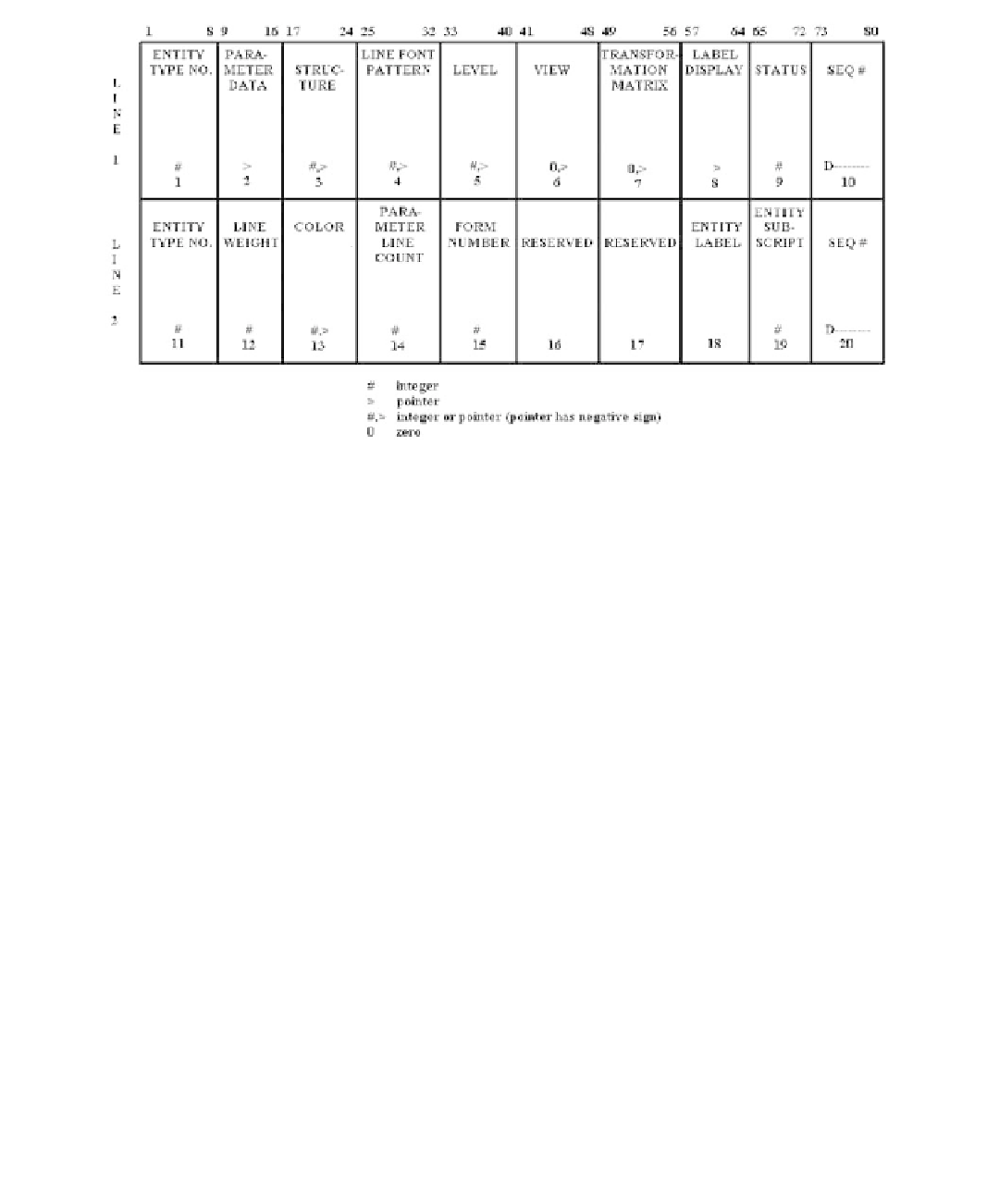Graphics Reference
In-Depth Information
Figure C.2.
The Directory Entry Section.
The Directory Entry Section.
There is one directory entry for each entity in the file
and each consists of two lines that are subdivided into 8-bit fields. The object of the
section is to provide a list of all entities and to specify their attributes. The ordering
of the entries can be arbitrary except that certain definition entities must precede their
instances. In our sample file in Figure C.1 there are actually 73 entities although we
have only shown some of them. Figure C.2 shows the fields in the directory entry lines
and their names. We describe the more interesting ones.
Entity Type Number.
Each entity has a unique number. Numbers 100 through
199 are reserved for geometric entities. The nongeometry entities come in two
flavors: annotation entities and structure entities. The entities and their numbers
will be discussed in more detail in Sections C.3 and C.4
Parameter Data.
This pointer specifies the number of the line in the parameter
data section where the data for this entity starts. For example, the data for the 124
entity starts at line 1 and that of the 110 entity starts at line 19 in the parameter data
section.
Transformation Matrix.
This points to a transformation entity (entity number
124). All geometric points need to be transformed by this transformation. For
example, entities 110, 100, 112, 106, and 108 all use the transformation entity
specified in directory entry line number 1.
Status.
This field consists of four 2-digit values whose meaning is shown in
Figure C.3. For example, in our file entity 406 is a physically dependent definition.
Parameter Line Count.
The number of lines used by this entity in the parameter
data section. In our file, entity 100 used two lines of data and entity 106 used six.

